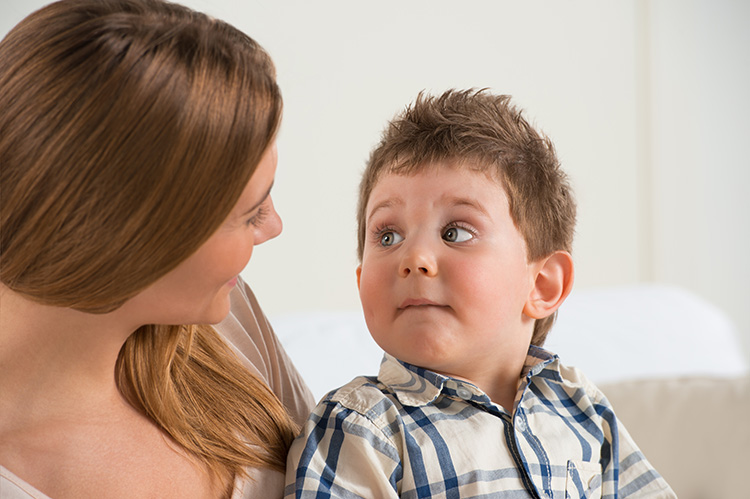Neurotic stuttering, also called logoneurosis, is a form of violation of speech functions caused by a psychological factor. This violation is expressed by a change in speech rhythm, the occurrence of repetitions and hesitations. Neurotic stuttering is characterized by convulsive syndrome of the tonic and tonicclonic type in the field of articulatory and respiratory-vocal muscles. It is included in the category of neurosis, since it is closely related to mental trauma. Logoneurosis occurs mainly in childhood, most often it affects children 4-5 years old. Moreover, the majority of patients with stuttering are male.
Etiology of the disease
The main prerequisite for the appearance of neurotic stutter is the situation when the psyche is injured. It can be a sudden stressful situation caused by a strong fright or a fit of anger, as well as chronic emotional stress, for example, against the background of a prolonged separation from relatives or a difficult working environment. In the first case, most likely, the pathology will have a short-term nature, while in the latter case, stuttering becomes constant, and the likelihood of concomitant neurological diseases is high.
In childhood, the appearance of neurotic stuttering is largely due to the unfavorable speech environment in the family. This is due to the forced speech skills of the child, bilingualism, information overload, etc. Some children begin to imitate a stuttering family member.
Hereditary predisposition also plays a role in the occurrence of stuttering of the neurotic type. This may be due to a genetic factor due to insufficiency of the speech apparatus.
The process of developing neurotic stutter has not yet been fully studied. It is assumed that when a logoneurosis occurs, a stable conditioned reflex connection is fixed due to the formation of motor automatism. At the age of 2-4 years, the occurrence of stuttering of the neurotic form is preceded by pathological fixation of speech stutters of natural origin as a result of the formation of speech. Talking about pathology in this period is unreasonable.
Causes of development in children
Often there is a neurotic form of stuttering in children aged 2-5 years. Speech functions are formed in the child by one of the latter, while speech can be imperfect and not fully formed over a long time. That is why the system may fail.
Scientists note the connection between the non-standard development of the child and the occurrence of stuttering. Some believe that at this age, the establishment of complex neurotic connections in the brain. If an injury occurs to this important organ, then the likelihood of stuttering increases. To date, you can find evidence that the pathology is younger and more common in children under two years of age. The causes of neurotic stutter should be determined by the doctor.
Quite often, children who have been using a pacifier for a long time can hardly cope with the pronunciation of certain sounds and suffer from stuttering. At the same time, a speech defect has the property of rapidly developing. Stuttering is not common for every child. As a rule, vulnerable, susceptible and emotional children who are predisposed to neurotic diseases suffer from pathology. Specialists characterize such children as neurotics. Consider several risk factors that can lead to the appearance of a neurotic form of stuttering in a child.
- Almost never stuttering appears from scratch. In any case, this pathology has a prerequisite and a factor that influenced its development. Previously, a typical cause of stuttering was considered a strong and sudden fright, for example, when riding on rides, when watching a horror movie or a loud salute.
- A common reason for the development of neurotic stuttering in children is the divorce of parents. Children suffer from family conflicts, often hear parents quarreling and talking about divorce, and sometimes even take a direct part in all the ups and downs. A child cannot always understand what happened due to age, as a result of which he gains a feeling of self-doubt, uselessness and insecurity. All this can affect speech functions.
- Another reason for the formation of stuttering in a child is the appearance of a brother or sister and concomitant jealousy. The child believes that parental care is completely transferred to the youngest member of the family, that he is left alone and is not needed by anyone.
- Sometimes stuttering occurs as a result of imitation of an adult or other children who are surrounded by a child. There were cases when in the kindergarten group, which was attended by a child with stuttering, after some time there were already several children with a similar pathology. Children tend to copy not only good in speech, but also negative aspects. Borrowed stuttering is more difficult to correct than acquired due to the psychoemotional factor.
- Left-handed people who are trying to retrain may also suffer further from stuttering. Forcing the use of the right hand causes a brain conflict in the child’s brain. He has to reconfigure the work of the brain in an unnatural way for him, which also leads to speech impairment.
- Overloaded with information, children often also get logoneurosis. The modern child is forced to be in several information fields, which leads to overstrain of the psyche. Parents do not understand that it is difficult for a child to switch from one subject to another, as a result, his brain receives a lot of information that is sometimes unnecessary and inappropriate for age and an overload occurs, resulting in speech disorders and logoneurosis.

Symptoms and Behavior
The neurotic form of stuttering is characterized by an uneven distribution of the severity of speech disorders. In different situations, the child can cope well with the speech load without showing any disturbances, and otherwise speech is difficult to such an extent that the communication process becomes almost impossible. As a rule, in a familiar and familiar environment, surrounded by close people, logoneurosis may not manifest itself or be slightly pronounced. An increase in the intensity of stuttering occurs against the background of excitement and overstrain in an emotional sense, with awareness of one's own responsibility and significance of the event. Also, patients with neurotic stuttering can be quite difficult to communicate with strangers or speak to an audience.

An imprint is also imposed on the behavioral characteristics of a stuttering person. The patient tries to avoid the pronunciation of complex multi-compound words, resorting to various speech techniques to veil the existing defect, for example, by stretching the sounds. In most cases, against the background of logoneurosis, logoophobia develops. It can be difficult for a stuttering person to speak with others, especially strangers, and a complex in communication develops. Often a person refuses to speak at conferences and planning meetings, as he is embarrassed by his speech defect.
Young children suffering from logoneurosis, avoid participation in morning performances in the kindergarten, and schoolchildren refuse to respond verbally to lessons. Pathology in adolescence is most pronounced , which leads to poor performance and maladaptation of the child.
The neurotic form and the neurosis-like form of stuttering can manifest itself in various variations. Against the background of acute mental trauma, a neurotic reaction may develop that occurs after the state of shock or affect is exited. Factors such as an unfavorable situation in the family or chronic trauma to the psyche can lead to the development of changes of the preneurotic type, when speech stumbling occurs sporadically. In the future, the situation can move in two directions - both in the direction of reducing the defect, and in the direction of its consolidation and progression up to speech automatism.
Stuttering stuttering
The fixation of stuttering of the neurotic type is accompanied by the following conditions:
- depressive type neurosis ;
- sleep disturbance;
- asthenia;
- neurasthenia;
- hysteria;
- phobias;
- enuresis;
- hypochondria.
In addition, there are vegetative disorders that correspond to the symptoms of vegetative-vascular dystonia. Adolescents are particularly susceptible to somato-vegetative and neurotic disorders.
The nature of the course of the disease
The course of logoneurosis can have both a recurring and undulating character, when during an increased psychoemotional overvoltage an aggravation of the defect occurs. At the age of puberty, a significant deterioration in speech problems also occurs. In the future, the severity of stuttering decreases until it is completely eliminated. An adult who in childhood suffered from neurotic stuttering, in a stressful situation, can again feel this defect.
Diagnostics
Neurotic and neurosis-like stuttering should be diagnosed together by a neurologist and speech therapist. It is very important to identify the presence in the patient's history of a stressful situation of acute or chronic nature. When making a diagnosis, speech is examined for various rhythmic disturbances, the presence of stumbling and stretching of sounds, repetitions of syllables, defects in smoothness and pace. The task of a neurologist is to check for deviations in neurological status. As a rule, with logoneurosis they are absent. The specialist can detect an insignificant revival of reflexes and signs of a vegetative type dysfunction.
An important step in the diagnosis is the differentiation of logoneurosis from neurosis-like stuttering. The latter type develops against the background of traumatic brain injuries, as well as in pathologies of the nervous system. This disease has the property of constantly progressing and is not accompanied by attempts to hide the pathology from the patient or by logophobia.
Neurosis-like stuttering is often accompanied by personality changes of an organic nature, such as inertia, difficulty switching, or a state of constant euphoria. To exclude the organic origin of the pathology, additional studies should be carried out.
- Electroencephalography.
- Echoencephalography.
- Rheoencephalography.
- Magnetic resonance imaging.
- CT scan.
It is equally important to exclude the so-called speech stumbling, which occurs against the background of cerebral pathology and is accompanied by blurred speech as a result of articulation disorder, impaired speech speed and rhythm, its monotony, difficult word selection and permutation of semantic accents.
Logoneurosis can also accompany such mental disorders as oligophrenia, schizophrenia, psychopathy. In this case, you need to get the help of a qualified psychiatrist.
Treatment for neurotic stutter
As a rule, the treatment of logoneurosis involves an integrated approach and the work of several specialists, including a neurologist, speech therapist, psychotherapist and psychologist. To correct stuttering, speech therapy sessions are conducted on a regular basis. However, without exception from the patient’s life, a situation that traumatizes the psyche, classes with a speech therapist will not produce results.
Methods of psychotherapy
To change the patient’s perception of a stressful situation and exclude its influence, work is carried out with a psychologist and psychotherapist, during which the following methods can be used:
- psychoanalysis;
- psychocorrection;
- art therapy;
- psychological trainings;
- psychotherapy.
If the problem arose against the backdrop of an unfavorable family environment, patients are recommended joint psychotherapy with close family members.
Neurologist help
The help of a neurologist will be needed to prescribe adequate drug therapy, which should be aimed at eliminating the signs of logoneurosis and its accompanying disorders. Depending on the complications accompanying logoneurosis, the following drugs may be prescribed:
- antidepressants;
- sedatives;
- tranquilizers;
- antipsychotics.
Reflexology and the use of electric sleep
In addition, a specialist can prescribe reflexology and the use of electric sleep. Non-standard therapeutic methods, such as social rehabilitation, biofeedback therapy, hypnotherapy, can be connected to the treatment of logoneurosis. The treatment of stuttering can take a lot of time and require effort not only from the patient himself, but also from his relatives.
We examined the characteristic of the neurotic form of stuttering.